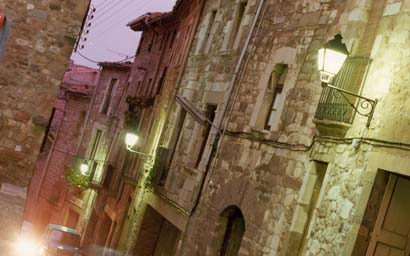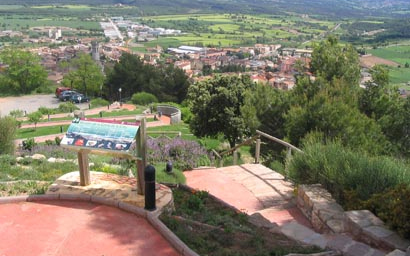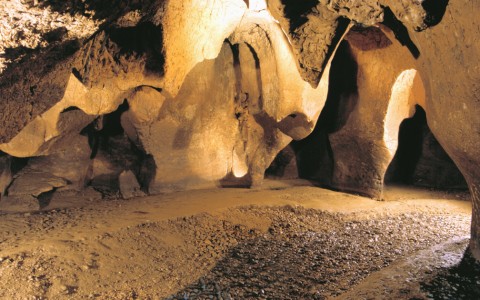Discovering the town centre
Nowadays it is difficult to find any building dated prior to the 16th century inside the town, since many houses were rebuilt in the 17th and 18th century, a period when the textile industry of Moià achieved its greatest splendour. In the upper part of the town there is the Escola Pia (school belonging to the Order of the Pious Schools), a square-shaped building with a beautiful covered cloister, and the church, with an interesting Baroque portal, and very close to it the Auditori Sant Josep (Saint Joseph Auditorium). It is a former church built in 1620 and enlarged over the course of the 18th century. In this case there is a Renaissance portal, by Jaume Rubió, a Moià sculptor. Currently, it is used as a conference hall and an auditorium.
Among the civil buildings, there is the Casanova’s manor house (currently a museum), with elements from the 16th and 17th centuries and pictorial decoration from the 18th century. It is also worth mentioning the house of Cal Andreu, of Renaissance style, and Cal Bou, with some remarkable Baroque sgraffiti. In the Joies Street, most of which has been restored leaving the stone exposed, there are several houses with elements reminiscent of the Gothic style.
The Main Square (Plaça Major) is also worth a visit. For many centuries, it has been the centre of town life and it is the place where the weekly market has been held since 1152, formerly every Tuesday and currently, every Sunday. The vaults which have been an inseparable part of its appearance date from the 13th century, when Sibil•la de Saga, lady of the village in those days, gave permission to build them.
In the square there is the Santa Maria parish church, constructed between 1674 and 1745 to replace the former Romanesque church consecrated in 939. It consists of a large nave with a crossing surmounted by a dome and two aisles. The Baroque portals, with Salomonic columns, are remarkable. The bell tower, made of carved stone and octagonal in shape, is 52 metres high.
If we continue strolling around Moià, we can we can go along to the Can Viñas Modernist Complex. Tenor Francesc Viñas’ (1863-1933) houses are a good example of architecture on the borderline between modernism and noucentisme. It consists of three houses with very different characteristics and a large garden.
And in the middle of the town, in the former garden belonging to Josep Coma i Passarell’s house (Cal Cristo) there is the Municipal Parc. On its grounds there is splendid vegetation with hundred-year-old trees and corners which perfect for an enjoyable walk and relaxation. In the same place we can find the Municipal Library and the Recreation Centre for elderly people.













